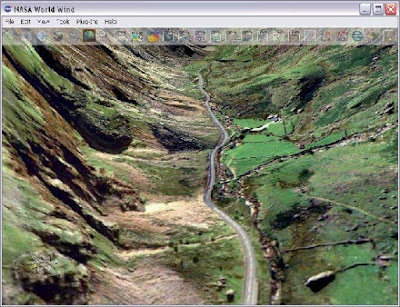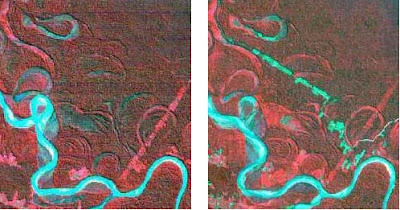10 Ways to Speed Up Google Chrome on PC or Mac
Google Chrome is the most used laptop browser in the world and rightly so, as it’s additionally one of the most characteristic wealthy browsers. However, it is additionally notorious for eating up resources shortly and slowing down your computer; specifically if it’s an older machine. Chances are, if you are a power user, you may additionally no longer be satisfied with the performance Chrome has to offer.
Whatever your motive is; if you are searching to speed up Google Chrome then there are more than one tweaks to supply Google’s browser a pace boost. Today, we will show you 10 easy yet high quality methods to speed up Chrome:
1. Remove Unnecessary Extensions:
Let’s start with some thing basic; many of the Chrome extensions work in the heritage to furnish their services. In the process, they devour up a lot of system’s sources as they do their job. So, if you have too many extensions enabled on Chrome, they should without difficulty be the reason of bad overall performance on Chrome. You ought to either disable or delete all the extensions that you don’t use anymore.
To do so, click on the hamburger menu at the top proper corner of Chrome and then click on on “More tools”. After that, click on “Extensions” from the aspect menu.
To do so, click on the hamburger menu at the top proper corner of Chrome and then click on on “More tools”. After that, click on “Extensions” from the aspect menu.

Now you have to be directed to the extensions web page where all your extensions will be listed. To disable an extension, click on the “Checkbox” next to it. If you would like to completely get rid of the extension, then click on on the “Trash can” icon next to it. We will also suggest you to disable extensions that you don’t use frequently, so that they are available when you want them again.

2. Enable Chrome Prefetch
Chrome makes use of a prediction service to try and guess what links and pages you might also click next and robotically masses them in the background, so that the pages load up quickly. Of course, this makes use of more information but it additionally makes shopping considerably fast.
To enable Chrome prefetch, go to “Settings” from the Chrome hamburger menu and click on on “Show advanced options” at the bottom of the page.
To enable Chrome prefetch, go to “Settings” from the Chrome hamburger menu and click on on “Show advanced options” at the bottom of the page.

Here, Tick the checkbox next to the option “Use a prediction service to load pages more quickly” under the “Privacy” heading. You should disable this feature if you have a limited internet plan.

3. Use Chrome Data Saver
Google Chrome can use Google servers to compress net pages to make them quicker to load and also use much less bandwidth. If you have a gradual connection with restrained data, then this may want to be a existence changer for you. However, this is not a built-in Chrome feature, rather Google offers a Chrome extension of its personal that you can install in Chrome.
You can install Data Saver extension for Chrome and it will automatically start compressing net pages as you browse the web. Although it ought to be stored in idea that the extension doesn’t work on encrypted internet pages; the one with “https” at the start of the address.
You can install Data Saver extension for Chrome and it will automatically start compressing net pages as you browse the web. Although it ought to be stored in idea that the extension doesn’t work on encrypted internet pages; the one with “https” at the start of the address.
4. Make Flash Plugins Click to Load
Numerous websites use flash content like videos, commercials and different kind of interactive content. Such content material is on the whole very heavy and it may sluggish down a page. I, actually discover movies between content material and interactive quizzes (and comparable plugins) on the side to be very distractive and I am certain many will agree with me. Well, you can make sure that the flash content solely masses up when you click on on it, so that your bandwidth is saved, distractions are minimum and Chrome works smoothly.
To do that, go to Chrome’s Advanced Settings like above and click on “Content Settings” in the “Privacy” heading.
To do that, go to Chrome’s Advanced Settings like above and click on “Content Settings” in the “Privacy” heading.

Now, scroll down and pick out the option “Let me pick when to run plugin content” under the “Plugins” section. Once done, on every occasion a plugin or flash content appears on a page, it will solely play when you click on on it.

5. Disable Images
This isn’t a recommended solution, however if you can stay with it then it could be extraordinarily beneficial. You can disable pics in Chrome and all the photographs on the internet pages will not load. Although photos make a internet web page eye-catching and greater informative, they are additionally very heavy and are the motive why certain web pages take a lot of time to load. If you are only searching to examine something, you can disable the photographs and without difficulty speed up web page loading time.
To disable photographs in Chrome go to the same “Content Settings” web page like we did in the above tip. Here, select the alternative “Do not show any images” underneath the “Images” section.
To disable photographs in Chrome go to the same “Content Settings” web page like we did in the above tip. Here, select the alternative “Do not show any images” underneath the “Images” section.

6. Clear Chrome Data
Chrome might also turn out to be slow due to too a lot records it is holding, such as cookies, cached content material and searching history. If you haven’t deleted this data for pretty some time, then it ought to be the cause for the slow down.
Go to “History” from the Chrome hamburger menu or by way of pressing Ctrl+H, and click on the “Clear browsing data” button at the top.
Go to “History” from the Chrome hamburger menu or by way of pressing Ctrl+H, and click on the “Clear browsing data” button at the top.

Now, you check the checkbox subsequent to the specific data you would like to delete and click on the “Clear browsing data” button to delete the data. We will no longer endorse you to delete passwords and autofill form data, as they are very essential for each day browsing and additionally don’t put any considerable stress on the browser.

Chrome Experimental Features
The are additionally some Chrome Experimental Features that can appreciably enhance the overall performance of Chrome and speed it up. However, these elements are now not reliable and may not be secure on all the machines. Although in most instances they work simply satisfactory without any substantive poor effect. If any of these experimental elements negatively have an effect on your searching experience, then you ought to revert the modifications you made.
To get entry to these features, type “chrome://flags” in the address bar and hit enter. After that use the “Find” feature (Ctrl+F) to discover the experimental elements that we have stated below:
To get entry to these features, type “chrome://flags” in the address bar and hit enter. After that use the “Find” feature (Ctrl+F) to discover the experimental elements that we have stated below:

7. Change Tile Height and Width
You can modify tile height and width to allocate extra RAM to it. This will allow better scrolling and least stuttering whilst the usage of Chrome browser. However, it need to solely be adjusted if you have adequate RAM for Chrome; 4GB should work just fine.
Type “Default tile” in the Find dialog and you have to see each Default tile width and height options. Use the drop down menus under them and alternate it from “Default” to 512. You can allocate more or less, however 512 work satisfactory for most people.
Type “Default tile” in the Find dialog and you have to see each Default tile width and height options. Use the drop down menus under them and alternate it from “Default” to 512. You can allocate more or less, however 512 work satisfactory for most people.

8. Enable Experimental canvas features
This is an under development characteristic that allows Chrome to take benefit of canvases to speed up web page loading speed. Simply put, it can also eliminate specific types of content material while opening a web page. However, the modifications won’t be seen to the users – however it’s there.
Search for “Experimental canvas features” and click on the “Enable” button under it, to allow this feature.
Search for “Experimental canvas features” and click on the “Enable” button under it, to allow this feature.

9. Enable Fast tab/window close
This is some other available characteristic that permits Chrome to rapidly close tabs and home windows to make it work fast. In actual, Chrome simply indicates you that it has closed the tab/window quickly, however the closing technique continues in the background. This means Chrome is now not really speeding up the tab closing process, alternatively it is simply hiding it from you and stopping it from getting in your way. In practice, this does speed up your browsing due to the fact at your end, you don’t have to wait for a 2nd as the tab closes.
Search for “Fast tab/window close” and click on the “Enable” button below to turn on this feature.
Search for “Fast tab/window close” and click on the “Enable” button below to turn on this feature.

10. Enable QUIC protocol
A work in development connection protocol created with the aid of Google that prevents a couple of journeys to the server to create a connection. This makes it higher than UDP, as much less journeys to make a connection means much less time spent to create a connection and load the page. Usually, at least 2-3 journeys are made earlier than a connection is created with the server.
Search for the option “Experimental QUIC protocol” and use the drop down menu under it to allow it.
Search for the option “Experimental QUIC protocol” and use the drop down menu under it to allow it.

Once these experimental elements are enabled, you will have to restart Chrome to let these modifications take effect. Click on the big “RELAUNCH NOW” button at the bottom of the display screen to relaunch Chrome and see if it speeds up.

See Any Difference in Chrome’s performance?
Well, if you be aware of any other approaches to speed up Chrome, do share with us in the comments area below to assist other users.











































